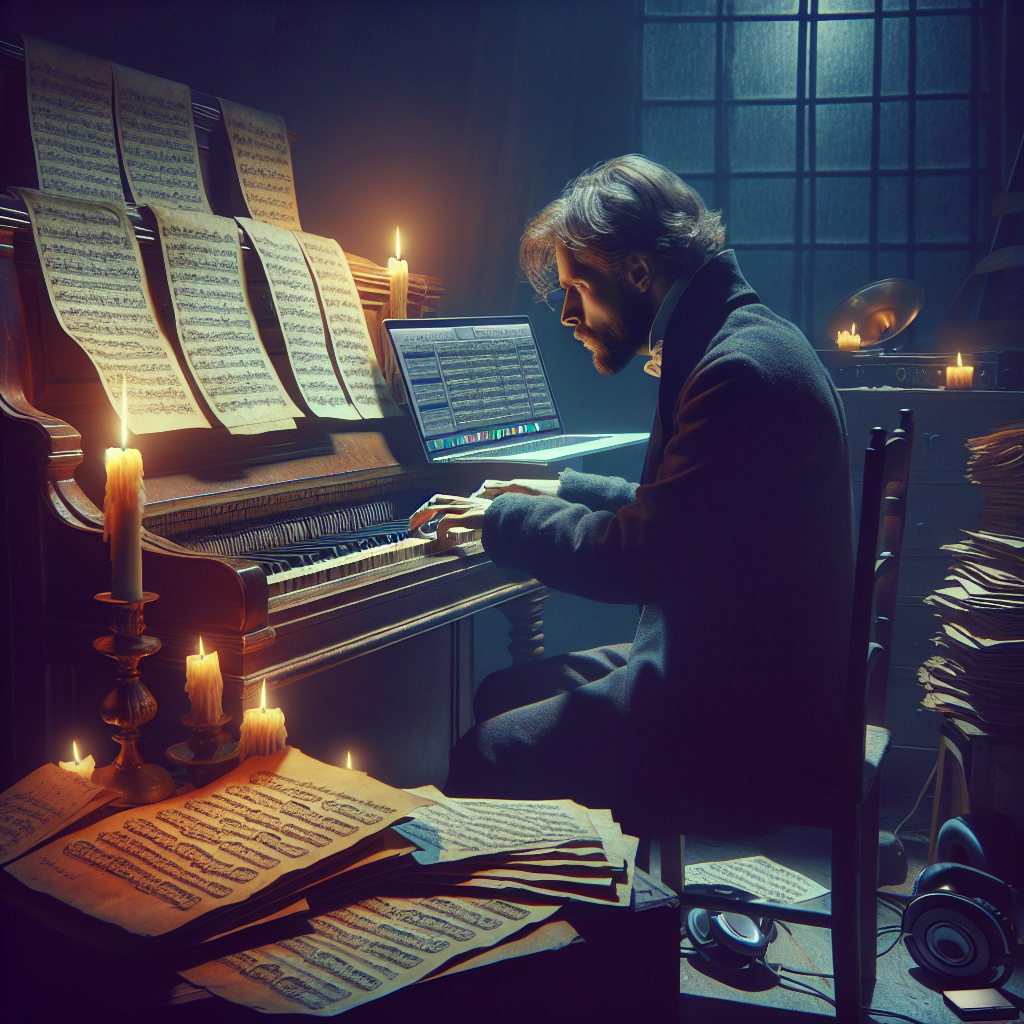
Interpreting Beethoven’s Late Style in the 21st Century
Ludwig van Beethoven remains one of the most celebrated and influential composers in the history of Western music. Born in 1770 in Bonn, Germany, Beethoven’s life is a compelling story of triumph over adversity, artistic innovation, and enduring legacy. His career underwent a dramatic transformation towards the end of his life, often referred to as his “late style.” This phase, spanning approximately from 1815 until his death in 1827, was marked by profound changes in his musical output and personal outlook. Characterized by technical complexity, emotional depth, and innovative structural designs, Beethoven’s late works have fascinated musicians, scholars, and listeners for generations. Understanding and interpreting these compositions in the 21st century presents unique challenges and opportunities.
To fully appreciate Beethoven’s late style, one must consider not only the technical elements of his compositions but also the personal and historical context. Beethoven faced significant personal struggles during this period, including increasing deafness, which profoundly influenced his work. His late compositions, however, exhibit a remarkable blend of introspection and spiritual transcendence, themes that continue to resonate with contemporary audiences.
In this article, we will explore the life and history of Beethoven with a focus on his late style. We will delve into the characteristics of his late works, their reception over time, and how modern performances interpret these masterpieces. By examining his late quartets, sonatas, and symphonies, we can gain insight into the genius of Beethoven and understand why his music remains relevant and inspiring in the 21st century.
Early Life and Career
Born into a musical family, Beethoven’s early years were steeped in music. His father, Johann van Beethoven, was his first teacher, although he was known to be a demanding and often abusive figure. Recognizing Ludwig’s prodigious talent, Johann sought to mold him into a child prodigy similar to Mozart. In 1787, Beethoven moved to Vienna, the cultural capital of the time, to study under Joseph Haydn, one of the leading composers of the era.
Beethoven quickly established himself as a virtuoso pianist and composer, gaining the admiration of patrons and fellow musicians. His early works, such as his first symphonies and piano concertos, adhered to the Classical style, exhibiting clarity, balance, and form. However, his innovative spirit soon began to show, pushing the boundaries of musical norms. By his middle period, Beethoven was already regarded as a revolutionary figure in music, with works like the “Eroica” Symphony and the Fifth Symphony establishing his reputation as a master of emotional expression and structural innovation.
Despite his rising fame, Beethoven’s life was not without struggle. By his late 20s, he began to lose his hearing, a condition that would eventually lead to almost complete deafness. This adversity, rather than hindering his creativity, seemed to spur Beethoven towards even greater heights. It is within this context of overcoming personal limitations that Beethoven’s late style emerges, marked by a profound depth and complexity that continues to intrigue and inspire.
Transition to the Late Style
The transition to Beethoven’s late style is typically marked around 1815, following a turbulent period in his personal life that included his increasing deafness, struggles with his nephew’s guardianship, and financial difficulties. This era signified a shift in his musical approach, characterized by a greater focus on introspection and philosophical themes. Unlike his earlier, more public-oriented compositions, his late works seemed to speak more directly to the individual soul.
This period saw Beethoven experimenting with musical form and harmony in unprecedented ways. For instance, the late string quartets (Op. 127, 130, 131, 132, and 135) broke away from traditional quartet structures, incorporating unusual key changes, rhythmic complexity, and thematic development that were groundbreaking for their time. These works are often viewed as Beethoven’s most profound statements, blending emotional intensity with a quest for spiritual transcendence.
A key hallmark of Beethoven’s late style is his contrast between simplicity and complexity. His compositions from this period often feature seemingly simple themes that undergo elaborate variations and transformations. This attention to detail and exploration of thematic development is evident in works such as the “Diabelli Variations” and the Piano Sonata No. 29 in B-flat major (“Hammerklavier”), which stand as towering achievements in the piano repertoire.

Reception and Interpretation of Late Works
When Beethoven’s late works first appeared, they were met with mixed reactions. Some contemporary audiences and critics were puzzled and even outraged by their complexity and unconventionality. It took several decades for these compositions to be fully appreciated, as later generations of musicians and audiences began to recognize their groundbreaking nature and profound depth.
Today, Beethoven’s late works are universally revered, often considered musical scriptures for performers and listeners alike. Interpretations of these pieces vary, reflecting different philosophical and aesthetic approaches. While some musicians seek to adhere strictly to Beethoven’s original manuscripts, others take creative liberties in their performances, exploring new dimensions within the music’s emotional and structural fabric.
Conductors and performers in the 21st century face the challenge of balancing historical authenticity with contemporary sensibilities. Advances in musicology have provided deeper insights into Beethoven’s intentions and the performance practices of his time, while modern technology and instruments offer new possibilities for interpretation. The result is a rich and dynamic landscape where Beethoven’s late style continues to evolve and inspire.
Modern Performances and Recordings
The advent of modern technology has revolutionized the way Beethoven’s late works are recorded and disseminated. High-fidelity recordings and digital platforms have made these compositions more accessible to global audiences. Performers now have the opportunity to reach listeners far beyond the concert hall, inviting a broader public to engage with Beethoven’s extraordinary legacy.
This accessibility has also led to a diverse range of interpretations. Renowned artists such as Daniel Barenboim, Maurizio Pollini, and the Emerson String Quartet have provided seminal recordings that offer unique perspectives on Beethoven’s late style. Each interpretation highlights different facets of the music, from its lyrical beauty to its structural innovations and emotional depth.
Moreover, live performances continue to play a crucial role in bringing Beethoven’s late works to life. The immediacy and intensity of experiencing these compositions in a concert setting create a powerful connection between the performers and the audience. Festivals and concert series dedicated to Beethoven’s music serve as vital forums for exploring and celebrating his contributions to the musical canon.
Educational and Scholarly Perspectives
Scholarly research and music education have significantly contributed to our understanding of Beethoven’s late style. Musicologists have meticulously analyzed his compositions, uncovering intricate details about their structure, harmony, and thematic development. This scholarly work has enriched the interpretative frameworks that performers and educators use to approach Beethoven’s music.
Educational institutions, conservatories, and music festivals often include Beethoven’s late works as a central part of their curriculum. Young musicians are encouraged to study and perform these compositions, gaining insights into their technical demands and expressive possibilities. Masterclasses and workshops with experienced artists provide valuable opportunities for aspiring musicians to learn about the nuances of interpreting Beethoven’s late style.
In addition, interdisciplinary studies that connect Beethoven’s music with broader cultural and historical contexts offer further avenues for exploration. Understanding the social, political, and philosophical influences that shaped Beethoven’s artistic vision enhances our appreciation of his late works. These educational endeavors ensure that Beethoven’s music remains a vibrant and integral part of our cultural heritage.
Conclusion
Ludwig van Beethoven’s late style represents a remarkable convergence of personal adversity, artistic innovation, and spiritual introspection. His compositions from this period continue to captivate and challenge musicians, scholars, and audiences alike. Interpreting these works in the 21st century requires a delicate balance of historical understanding, technical mastery, and emotional engagement.
Beethoven’s ability to transcend the limitations of his time and circumstances is a testament to the enduring power of his music. As we navigate the complexities of modern life, his late works offer timeless reflections on the human experience, resonating with listeners across generations. Through continued exploration and interpretation, we keep Beethoven’s legacy alive, allowing his music to inspire and elevate our shared cultural consciousness.
In the ever-evolving landscape of the 21st century, Beethoven’s late style remains a beacon of artistic excellence and profound expression. By embracing both historical authenticity and contemporary insights, we can unlock new dimensions of meaning and beauty in his music. The journey of interpreting Beethoven’s late style is a testament to the enduring relevance and transformative power of his genius, inviting us to delve deeper into the rich tapestry of his artistic legacy.